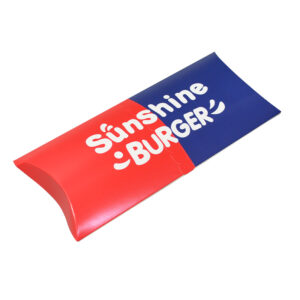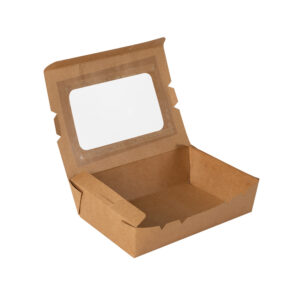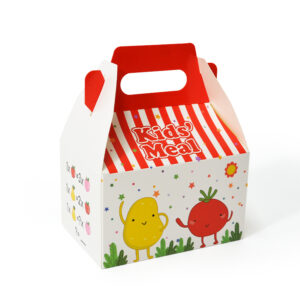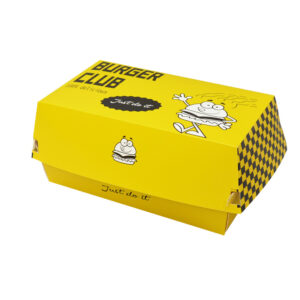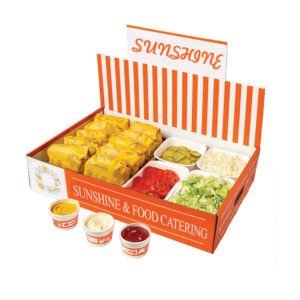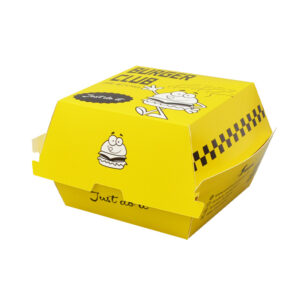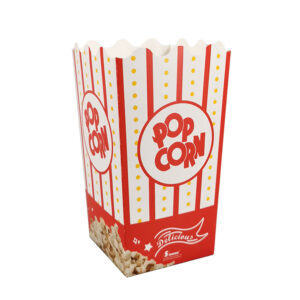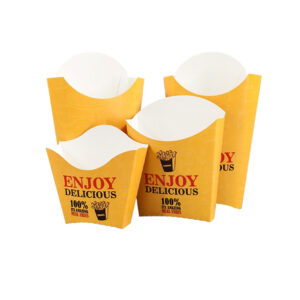In the fast-paced world of fast food, the packaging is often the unsung hero. It’s more than just a wrapper; it’s a crucial element in the overall dining experience. In this article, we’ll explore the world of fast food packaging, its types, significance, environmental impact, design, and much more. So, grab your favorite burger and let’s dive in!
The Importance of Fast Food Packaging
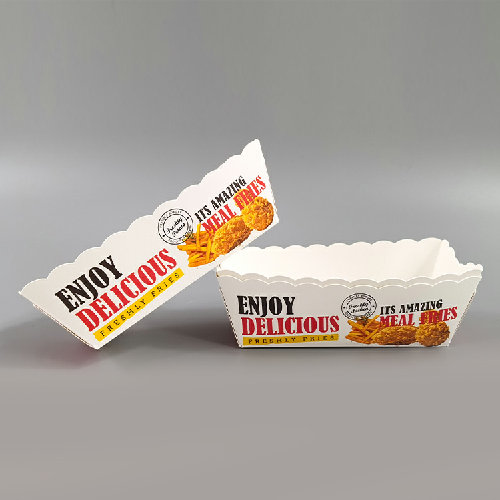
When you think of fast food, what comes to mind? Delicious burgers, crispy fries, and refreshing beverages, right? But have you ever considered the role of the packaging that holds these treats together? Fast food packaging serves several vital purposes:
- Protection: It keeps your food safe from contamination and spillage during transportation.
- Branding: Packaging showcases the brand’s identity and influences consumer choices.
- Convenience: It allows for easy consumption on the go.
Types of Fast Food Packaging
Fast food establishments use various materials for packaging, including paper, plastic, and foam. Each type has its advantages and disadvantages.
Paper Packaging
Paper packaging, like burger wrappers and fry containers, is popular for its eco-friendliness and biodegradability. However, it may not be as effective in preventing grease from seeping through.
Plastic Packaging
Plastic packaging, often used for drinks and sauces, is durable and resistant to moisture. However, it’s notorious for its environmental impact due to its non-biodegradable nature.
Foam Packaging
Foam packaging, commonly seen in coffee cups, provides excellent insulation but is less environmentally friendly.
Environmental Impact of Fast Food Packaging
Fast food packaging plays a significant role in the growing concern over plastic waste. The plastic problem has prompted many to seek sustainable alternatives.
The Plastic Problem
Single-use plastic containers and utensils contribute to pollution and harm marine life. Fast food chains are increasingly pressured to find eco-friendly solutions.
Sustainable Alternatives
Biodegradable materials, such as cornstarch-based plastics and plant fiber packaging, offer a more environmentally responsible option.
Design and Branding
In the world of fast food, design and branding are not just about aesthetics; they play a pivotal role in shaping consumer perceptions and preferences. When you unwrap your favorite burger or open that iconic red and white bucket of fried chicken, you’re not just experiencing the taste but also the brand’s identity.
Attractive Visuals: Fast food packaging is a canvas for brands to showcase their personality. Vibrant colors, catchy logos, and mouth-watering images of the food are carefully chosen to stimulate your appetite. The goal is to create an immediate craving that compels you to indulge.
Consistency: Successful fast food chains invest in ensuring that their packaging is consistent across all their outlets. Whether you’re in New York, London, or Tokyo, the packaging should make you feel like you’re in the same comforting environment you’ve come to know and love.
Brand Loyalty: Effective design and branding not only attract new customers but also nurture loyalty in existing ones. When you see those familiar colors and logos, it triggers a sense of trust and comfort. You know exactly what to expect.
Subliminal Messaging: There’s more to fast food packaging than meets the eye. Some brands use subtle messaging to connect with their audience. For instance, an image of a family sharing a meal may evoke feelings of togetherness and nostalgia.
Special Editions: Fast food chains often leverage design and branding to promote special editions or limited-time offers. Think of those themed cups or packaging that coincide with holidays or movie releases. These not only pique your interest but also create a sense of urgency to try something new.
Customization: In recent years, some chains have taken branding to a whole new level by offering customization. They allow you to personalize your packaging, adding a personal touch to your meal.
Convenience and Functionality
Fast food packaging is more than just a vessel; it’s designed to make your on-the-go dining experience as hassle-free as possible. Here, we’ll delve into the aspects of convenience and functionality that these packages bring to the table.
Easy to Open: Have you ever struggled with opening a food container, especially when you’re really hungry? Fast food packaging aims to solve this problem. Lids, flaps, and seals are designed for easy access, so you can dig into your meal without the frustration of wrestling with the packaging.
Built-in Utensils: Many fast food items come with built-in utensils. Think of the fork and knife that tuck neatly into your salad container or the handy spoon that comes with your ice cream. These additions mean you don’t have to scrounge around for the right tool.
Cup Holders: The drink cups you receive with your fast food often fit perfectly in your car’s cup holders. This thoughtful design ensures that your beverage stays securely in place while you’re on the move, preventing messy spills.
Compartmentalization: Packaging for combo meals often includes compartments for different food items, keeping them separate until you’re ready to combine them. This not only maintains the freshness and quality of each item but also allows you to customize your meal.
Food Safety and Packaging
When it comes to fast food, safety is of paramount importance. Fast food packaging plays a crucial role in ensuring that your meal is not only delicious but also safe to consume. Let’s explore how packaging contributes to maintaining food safety.
Food-Grade Materials: Fast food packaging is made from food-grade materials. These materials are tested and certified to be safe for contact with food. This prevents any harmful substances from leaching into your meal.
Protection from Contamination: Packaging acts as a barrier, protecting your food from external contaminants. Whether it’s dust, insects, or handling during transportation, the packaging serves as a shield to keep your meal clean and safe.
Preventing Cross-Contamination: In cases where different food items are packed together, like a combo meal, packaging is designed to prevent cross-contamination. Compartmentalization and sealed sections ensure that each item remains separate and untainted.
Temperature Control: For items that need to be served hot or cold, packaging helps maintain the appropriate temperature. Insulated packaging keeps hot items hot and cold items cold, ensuring that your meal is not only safe but also enjoyable.
Seals and Closures: Packaging often comes with seals and closures to ensure that your food hasn’t been tampered with. If the seal is broken or the package is damaged, it’s a clear sign that the food may not be safe to eat.
Expiration Dates: Many fast food items come with clearly marked expiration or “best before” dates. This information is crucial for consumers to know when the food is at its safest and most delicious.
Allergen Information: Packaging may also include allergen information or warnings for individuals with specific dietary restrictions. This is vital for those with allergies to avoid potential health risks.
Hygiene during Handling: Fast food employees are trained to handle food and packaging with hygiene in mind. They wear gloves, use utensils, and follow strict protocols to ensure that your meal is prepared and packaged in a clean and safe environment.
Regulatory Compliance: Fast food establishments must adhere to strict food safety regulations and standards. This ensures that the packaging and the food it contains meet the necessary safety criteria.
Cost Considerations
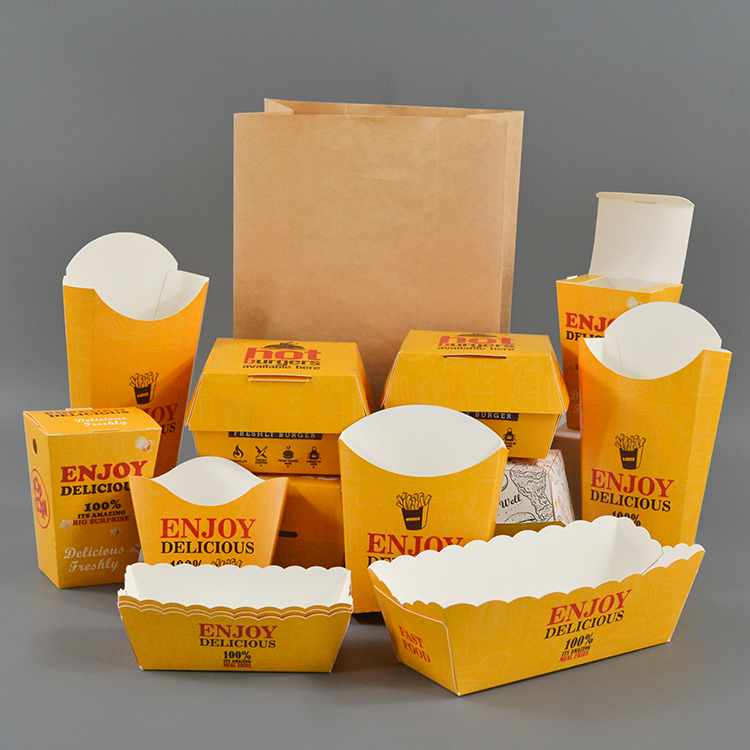
Behind the scenes of every fast food meal you enjoy, there’s a careful balancing act of costs. Fast food chains have to weigh various factors when it comes to the packaging they use. Let’s delve into the cost considerations that shape the fast food packaging landscape.
Quality vs. Cost: Fast food establishments face the constant challenge of balancing the quality of packaging with cost. While premium, eco-friendly materials and intricate designs can enhance the customer experience, they often come at a higher price. Chains need to strike a balance between providing durable, appealing packaging and keeping expenses in check.
Economies of Scale: Many fast food chains benefit from economies of scale. Buying packaging materials in bulk reduces the per-unit cost. This enables larger chains to invest in higher-quality packaging without significantly impacting their bottom line.
Waste and Environmental Impact: The disposal and environmental impact of packaging materials can also affect costs. Fast food chains increasingly consider the long-term costs associated with plastic waste and may invest in sustainable, biodegradable alternatives, even if they come at a slightly higher cost.
Branding and Marketing: The branding and marketing value of packaging is a significant consideration. While elaborate designs and branded packaging can be costly, they also play a crucial role in promoting the brand and influencing customer loyalty. This perceived value can justify the investment.
Logistics and Transportation: Packaging must also meet transportation and logistics requirements. Packaging that is stackable, lightweight, and easy to handle can reduce shipping costs and improve overall efficiency.
Customer Expectations: Meeting customer expectations is essential. While some customers may prefer eco-friendly packaging, others may prioritize the convenience and functionality of packaging. Chains must consider these factors to meet diverse customer demands without significantly increasing costs.
Cost-Effective Innovations: Fast food chains are continually exploring cost-effective innovations in packaging. For example, the development of new materials or designs that are both affordable and environmentally responsible is an ongoing pursuit.
Sustainability Initiatives: As environmental concerns grow, fast food chains are increasingly investing in sustainable packaging solutions. While the initial costs may be higher, long-term benefits in terms of customer goodwill and reduced environmental impact can outweigh the expenses.
Fast Food Chains Going Green
In recent years, a noticeable shift has occurred in the fast food industry. Many fast food chains are making conscious efforts to adopt more environmentally responsible practices, including sustainable packaging solutions. Let’s explore how fast food chains are going green and the impact it has on the industry.
Plastic Reduction: One of the most significant steps in going green is reducing plastic usage. Fast food chains have been phasing out single-use plastic straws, utensils, and packaging materials. Some have even set ambitious targets to eliminate plastic entirely from their operations.
Biodegradable Materials: To combat the plastic problem, fast food chains are embracing biodegradable materials. Packaging made from cornstarch-based plastics, plant fibers, and other sustainable sources is becoming increasingly common. These materials decompose more easily and have a lower environmental impact.
Recycling Initiatives: Fast food chains are also implementing recycling initiatives. Some offer recycling bins in their dining areas, allowing customers to dispose of their packaging responsibly. Additionally, chains are working on establishing recycling partnerships to reduce waste.
Innovations in Fast Food Packaging
The world of fast food packaging is not static. Innovations continue to emerge, enhancing the customer experience.
Smart Packaging
Imagine packaging that can interact with your smartphone, providing nutritional information and promotions. Smart packaging is on the horizon.
Interactive Packaging
Some fast food establishments are using augmented reality and QR codes on their packaging for entertainment and engagement.
Challenges in Packaging
Fast food packaging is not without its challenges. Regulations and compliance with safety standards, as well as catering to diverse consumer preferences, can be daunting.
Regulations and Compliance
Government regulations on packaging materials and labeling are critical for the industry. Non-compliance can lead to fines and damage to a brand’s reputation.
Consumer Preferences
Consumers’ preferences vary widely. Some may prioritize eco-friendly packaging, while others may prefer more traditional designs.
Reducing Fast Food Packaging Waste
Efforts are being made to reduce the waste generated by fast food packaging. Recycling initiatives and the promotion of reusable containers are steps in the right direction.
Conclusion
Fast food packaging is more than just a container; it’s an integral part of the dining experience. While challenges persist, the industry is evolving to meet consumer demands and environmental concerns. With innovations on the horizon and a growing focus on sustainability, the future of fast food packaging looks promising.
FAQs
- What is the environmental impact of plastic fast food packaging?
- Are there any fast food chains that have adopted sustainable packaging?
- How do regulations affect fast food packaging?
- What are some innovations in the field of fast food packaging?
- How can consumers contribute to reducing fast food packaging waste?
